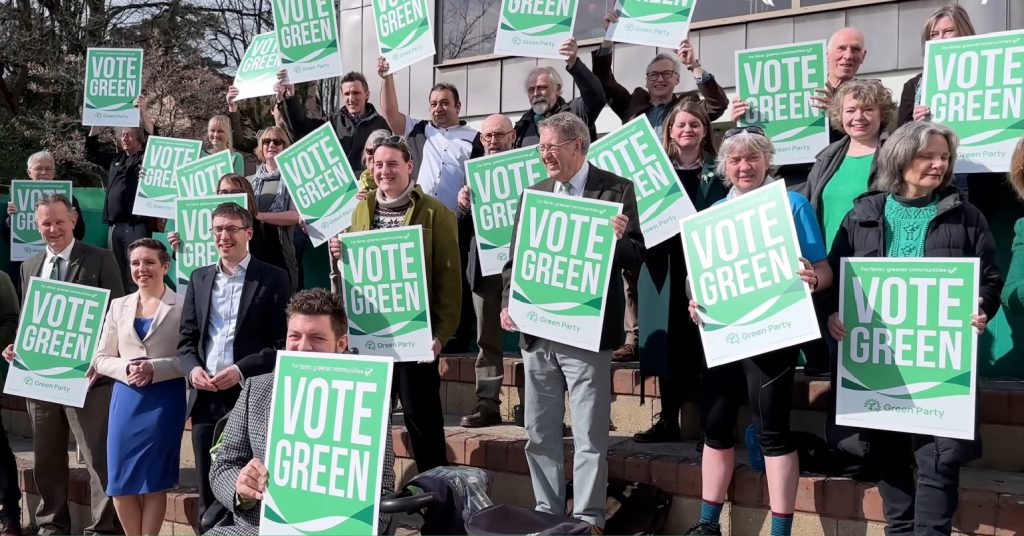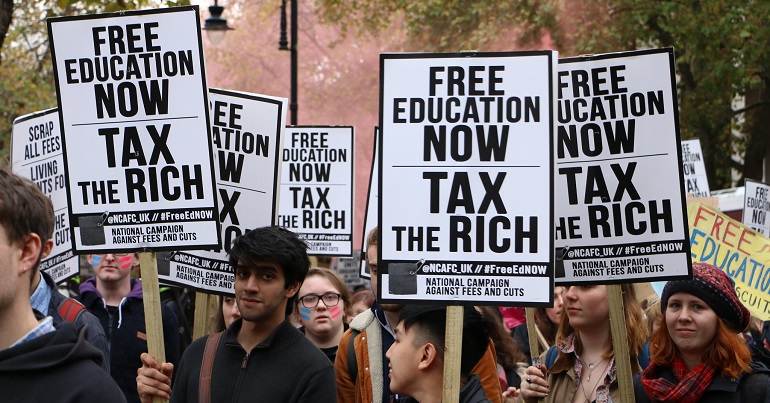A 5 Year Plan for the Left in the NUS
In April 2016, the NUS elects a progressive left-wing President and two or three VPs. This is no surprise: there have been a couple of lefty officers for a few years now, and student unions up and down the country are run by progressive sabbaticals. This is a perfectly realistic scenario: if you replace the words ‘left-wing’, ‘lefty’ and ‘progressive’ with ‘Labour’, then you have just described the NUS in 2011.
To make this a reality we must first accept that the results of NUS sabbatical elections are already decided before the conference begins. A successful election strategy is measured in years: those last days at the conference are just the finishing touches. In 2011, Labour Students is the only national organisation which sufficiently organises for these elections. It supports its members to become elected officers in student unions, fills the conference floor with sympathetic delegates and makes sure that delegates know exactly how to vote to maximise seats. We on the left must therefore replicate the winning strategies and improve the weaker ones where we can. All we need to do is think in the long-term.
So here is a proposal: my ideal five-year plan for a successful progressive left student movement in NUS.
Step 1 – Institutional Elections: Delegates and Sabbatical Officers
At this year’s NUS conference I was amazed to discover that a Labour Student in my delegation had been sent a text from the leadership outlining the order in which to vote for Labour candidates (thus ensuring that each of two Labour candidates won exactly half of the Labour first preferences). I’m not proposing that we organise ourselves in the same way, but we do at least need to make sure that the conference is filled with lefties.
Of course, this is easier said than done. We need to be willing to spend a couple of weeks each year mobilising for NUS elections. This means taking a long term perspective, balancing these commitments with our respective fights with university managements over course closures. Moreover, we need to be sharing expertise and resources with groups elsewhere. Ideally, we need a formalised network of information and tactics swapping.
More effort still should be put into each institution’s sabbatical elections, as these have a greater payoff but are much more difficult to win than delegate elections. Like it or not, student union sabbatical officers make up an increasingly large proportion of the institutions that send delegates. Furthermore, candidates for the NUS full-time positions are considered more credible if they’ve had past experience as a sabbatical officer, and they have more contacts on the national level.
The payoff will not be immediate – but until the conference floor if covered in lefties, can we really expect the elections to go our way?
Step 2 – The National Executive Committee (NEC)
The NEC is a place where we can immediately win seats. We already have enough delegates (and sabbaticals) for this to be possible. This year we won 4 seats on the block of 15, and would probably have won 5 if we’d run another FE (Further Education) candidate. Next year we should be aiming for 5 or 6. These seats are important for two reasons. First, they allow us to have a lot of say in NUS’ direction without winning any difficult full-time positions. Second, NEC members are in a strong position to stand in VP and Presidential elections.
There are many different routes to these positions. Our higher profile candidates should take the seats on the block of 15. Experienced sabbatical officers should support each other into getting elected at the ‘Zone Conferences’. And we must not overlook the importance of the sections (part-time, mature, international, post-graduate) and liberation campaigns (black, LGBT, women’s, disabled), where we have had much success in the past. The structures have been designed to stop us from taking too large a proportion of seats on the NEC, so we need to use a diversity of strategies. This is by no means impossible: after all, the Scottish Parliament was designed to stop the SNP winning a majority.
Step 3 – VPs
Now for the full-time positions. Here we have to pace ourselves; we must not try to run before we can walk. At first we should only aim to elect one VP. If we make one candidate our priority, our chance of winning will be much higher. We can make sure that s/he is absolutely everywhere in the build up to the campaign and we can hammer home why our candidate is the best one while the student right (or centre-left…) is focusing on an entirely different position. My suspicion from looking at this year’s election results is that many delegates who support the incumbents could be convinced to vote for one lefty VP as a counter balance. My gut reaction is that our easiest target this year is VP Higher Education but that’s by no means certain.
This is not to say we should rule out running multiple candidates next year – we certainly should run them. My point is that we need to think tactically and draw a distinction between winnable seats, where we unite to get the candidate elected, and unwinnable seats which we use as a forum for making our points and supporting the slate.
Of course, this requires that we put our factional differences aside. If we’re only aiming for one or two VPs each election then most factions won’t be represented. But, if we take a long-term perspective, then over the years each faction will have its opportunities.
Step 4 – President
This is the obvious final step, but all too often it’s presented as the first and only step. Electing a president will be the easiest thing in the world once we have a couple of VPs, a supportive NEC full and a conference floor full of sympathetic delegates. More importantly, if we want to maintain leadership over a long period then pushing for one presidential candidate isn’t enough – we need union sabbaticals, an NEC and string of VPs to act as presidents-in-waiting. We are not ready yet, so unless we get in by a fluke we can’t expect this to happen anytime soon. But by April 2016 we can be victorious.
And then we can get on with all the important stuff like much-needed democratic reforms, and fighting for the free, fair and funded education that NUS used to endorse.




Digital Scotsman
Yes you’re completely right about trying to win over the unaffiliated delegates at conference but I feel that this will largely come from having a stronger presence there.
As for NCAFC, I’m also very excited about its NUS prospects. There was an election for a national committee last week which returned a fantastically diverse group of people.
ahem that should say without the grassroots they are nothing!
All true and all power to you.
I left NUS a few years back, but certainly then there was an issue with how many prominent Left-of-Labour candidates presented themselves at conference. Training in winning over an audience rather than just the base would help. There are a large number of unaffiliated people at conference each year which your post doesn’t mention.
Furthermore, while trotskyism has a place in the student movement, it is an unhealthy balance if the only left of labour voices heard are trotskyist ones. We need a genuine broad left – like the one that I saw you had at Edinburgh last year, and is potentially emerging through the NCAFC.
What excites me about the NCAFC is that it some ways mirrors the Campaign for Free Education which got Kat Fletcher elected as the first non Labour Steudents President (although she was still Labour).
Having said that, she didn’t live up to her commitment of a campaign of civil disobedience. Because a distant NUS President can’t lead such a campaign. It can only be successful through on-the-ground through parallel grassroots networks. If NUS leadership is with us that great, but with the grassroots they are nothing.